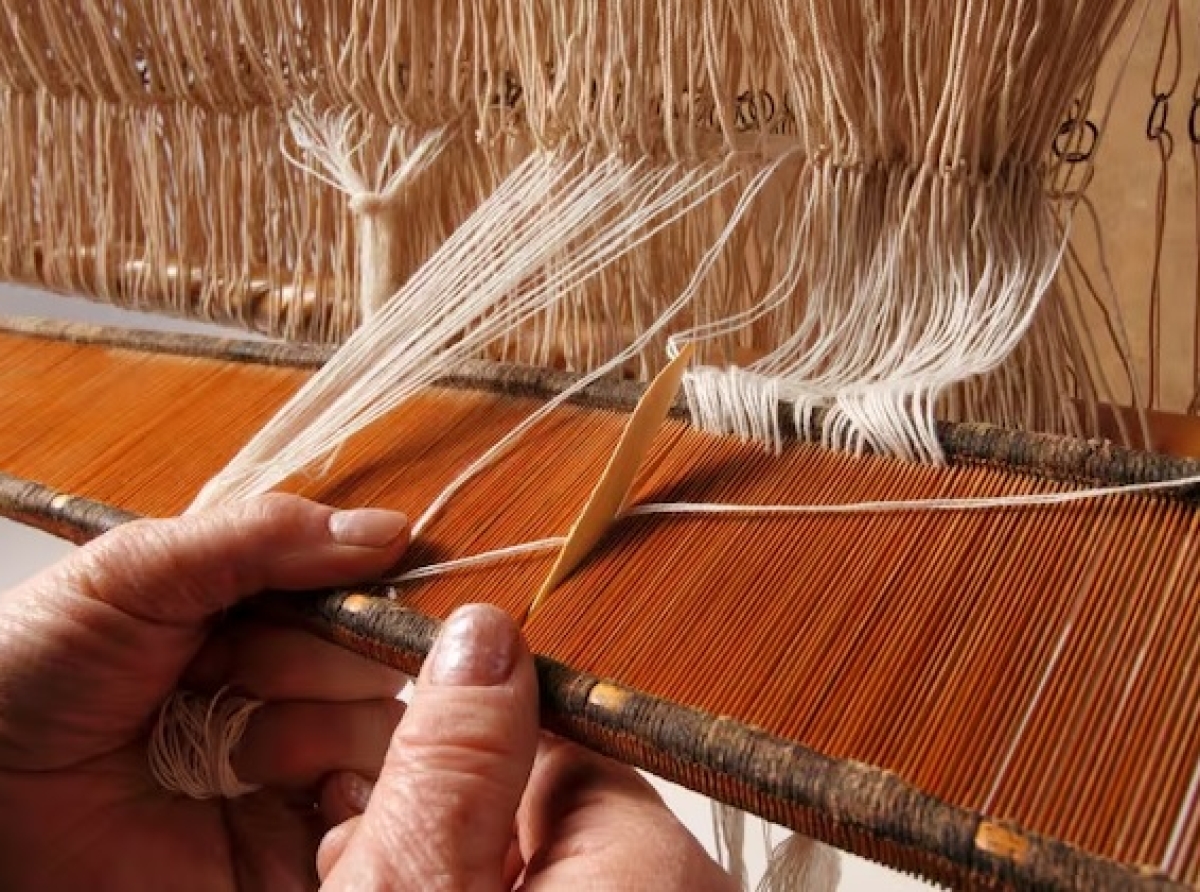India’s handloom sector weaving a growth story with its focus on cultural heritage and sustainability

India's handloom sector, a treasure trove of cultural heritage and artistic craftsmanship, is witnessing a revival. With its unique blend of tradition and contemporary designs, the handloom industry is not only contributing significantly to the country's economy but is also fostering sustainable livelihoods for millions of artisans across the nation.
The handloom sector is valued at around Rs 75,000 crores ($10 billion) growing at a steady CAGR of 10-12 per cent. Several factors have contributed to the sector’s growth such as: increasing consumer awareness about sustainable fashion, a revival of traditional crafts, and government support through various initiatives. The industry is a vital component of India's textile sector, contributing significantly to employment generation, particularly in rural areas. It employs over 4.3 million weavers and allied workers, making it the second-largest employment provider in the country after agriculture. The sector's contribution to exports is also noteworthy, with handloom products constituting a significant share of India's textile exports.
A crucial clog in textile industry’s wheel
The handloom sector is a crucial component of the Indian textile industry. It contributes significantly to the country's textile exports and domestic consumption. The sector produces a wide range of textiles, including saris, dress materials, home furnishings, and accessories. Production figures have steadily increased in recent years. Indian handloom products are exported to various countries worldwide. Export volumes and values have shown positive trends. The sector provides direct and indirect employment to a large workforce, contributing to rural development and poverty alleviation.
The government has been actively promoting the development of handloom clusters across the country. These clusters serve as hubs for handloom production, providing weavers with access to infrastructure, technology, and market linkages. Currently, there are over 700 handloom clusters in India, spread across various states. The cluster development approach has led to a significant increase in handloom production and exports. The clusters have also facilitated the preservation of traditional skills and techniques. For example, the 'Pochampally' handloom cluster in Telangana, known for its vibrant Ikat weaves, has witnessed a remarkable transformation due to cluster development initiatives. The cluster has become a thriving center for handloom production, generating employment and income for thousands of weavers. Similarly, Kanchipuram cluster, Tamil Nadu is famous for its silk saris, and has received support for skill development and product diversification.
Handlooms growing popularity in India can be gauged from the fact that several top designers like Ritu Kumar and Anita Dongre have successfully integrated handloom fabrics into their collections, creating a fusion of traditional craftsmanship and contemporary style. Similarly brands like Ekaya, Fabindia and Good Earth cater to a niche clientele, offering exquisite handloom products with intricate designs and high-quality materials.
In fact, the handloom market is witnessing a shift towards premium and luxury products, driven by increasing disposable incomes and a growing appreciation for handcrafted goods. Meanwhile, consumers are increasingly conscious of the social and environmental impact of their purchases, making handloom products a preferred choice for their sustainable and ethical attributes.
Government initiative and development of clusters
The government has implemented various schemes under National Handloom Development Programme to support the handloom sector, including financial assistance, skill development programs, and marketing support. It is also promoting the development of handloom clusters to enhance productivity, improve infrastructure, and facilitate market access. And the rise of e-commerce has provided a new platform for handloom weavers to reach a wider audience and sell their products directly to consumers.
India's handloom sector with its tradition, skill, and creativity holds a lot of promise. It not only generates employment and contributes to the economy but also preserves the country's rich cultural heritage. With support and initiatives, the handloom sector is expected to contribute a lot more to India’s overall textile sector.
























